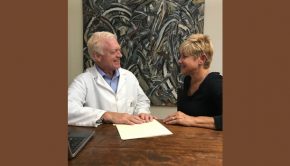The Over-The-Counter Pain Relief Trap
Most people don’t think twice about popping over-the-counter (OTC) pain relievers like Advil, Tylenol, Aleve or other nonsteroidal anti-inflammatory drugs (NSAID) for everything from headaches to muscle pain to arthritis. In fact, sales of nonprescription NSAIDs rank in the billions in the U.S. annually. There’s a general assumption that because these painkillers are nonprescription and readily available, they’re safe to use as much as necessary. This couldn’t be further from the truth.
NSAIDs can cause a host of serious problems in the body, including leaky gut (which can trigger autoimmune diseases), bleeding ulcers and joint deterioration—and that’s just the start. They can also impede healing (including broken bones) and increase the risk of heart and kidney disease, stroke and hypertension. In fact, the April 2017 issue of the European Heart Journal – Cardiovascular Pharmacotherapy reports that NSAIDs have been “associated with an increased cardiovascular risk” in a nationwide study. In addition, Science Daily reveals that a study conducted and published by the American Gastroenterology Association showed that long-term NSAID use “causes severe intestinal damage,” including “increased risk of bleeding and visible damage to [the] small intestine.” Those are just two of the many cited studies about NSAID-associated risks.
Having a history of heart or kidney issues increases the likelihood of NSAID-related complications, especially in people over 50, regardless of whether the medication is prescription or OTC. Add to that the possibility of dangerous drug interactions with other prescription and nonprescription medications that a person may already be taking, and there’s potential for serious problems.
Ironically, when NSAIDs are taken for joint pain, including pain caused by arthritis, the short-term pain relief is outweighed by the long-term negative effect of permanent joint damage. NSAIDs merely offer temporary symptom relief, they don’t cure the cause of pain, nor do they prevent progression of the underlying problem. And long-term use creates a need for more frequent and higher doses; as these become less and less effective over time, additional drugs are needed just to achieve temporary pain relief. The cycle only grows larger and more dangerous.
To manage chronic pain without daily NSAID use, the answer is different for everyone, but clearly it shouldn’t include an automatic prescription for painkillers or a recommendation for continued use of OTC pain relievers. Each person needs to be evaluated individually, including their medical history, comprehensive test results, dietary habits and lifestyle, which all need to be taken into consideration by their doctor to determine the root cause of their pain.
While inflammation is many times a key component of pain, there may be undiscovered food allergies or sensitivities contributing to the previously unidentified cause of the painful condition. Gut health is also extremely important; an unhealthy gut can result in any number of different health issues that cause seemingly unrelated pain in other areas of the body. Pain is a symptom, an indication of a deeper problem; masking pain won’t heal the root cause.
For more information about Dr. Doug Pucci, DC, FAAIM, practicing functional medicine, neurology and nutrition, call 201-261-5430 or visit GetWell-Now.com. See ad, page 3.





























